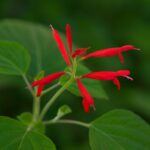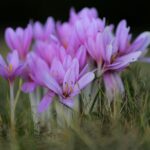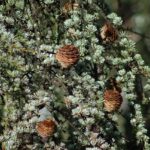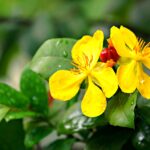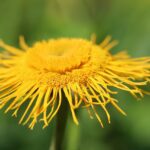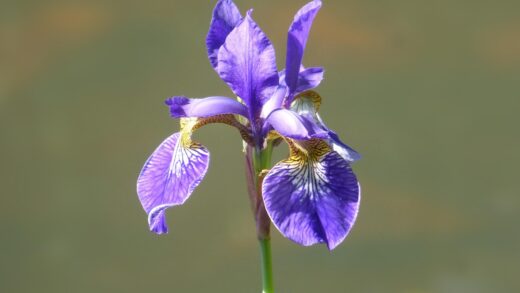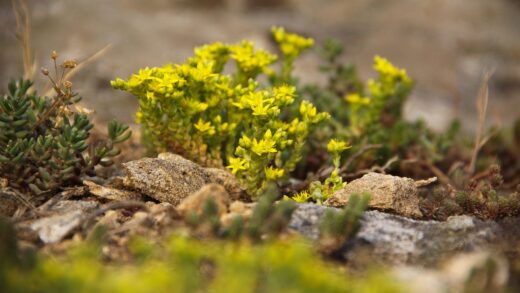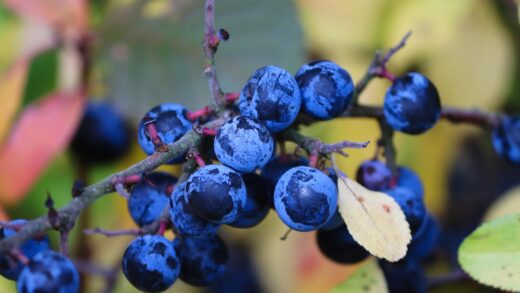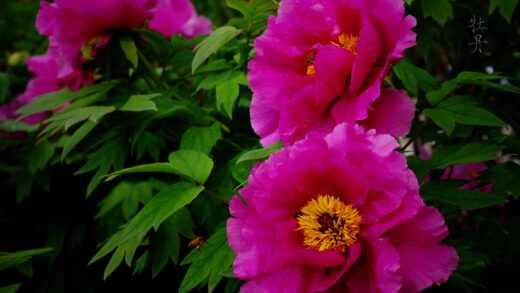Pruning is an essential horticultural practice for managing the vigorous growth of Algerian ivy and is key to maintaining its health, shape, and aesthetic appeal. As a fast-growing vine, this plant can quickly become overgrown, leggy, or unkempt if left to its own devices. Strategic pruning not only controls its size and spread but also stimulates the plant to produce new, bushier growth, resulting in a fuller and more attractive specimen. Whether your goal is to create a dense ground cover, a neatly trained climber, or a compact hanging basket, regular trimming is the tool to achieve it.
The practice of pruning serves several important functions beyond simple size control. It allows you to remove any dead, damaged, or diseased foliage, which improves the overall health of the plant and prevents the potential spread of pathogens. It also improves air circulation through the plant’s dense foliage, which can help to reduce the risk of fungal diseases that thrive in stagnant, humid conditions. For outdoor plantings, regular cutting back is crucial for preventing the ivy from becoming invasive and spreading into unwanted areas of the garden.
Understanding when and how to prune is fundamental to achieving the desired results without causing unnecessary stress to the plant. The timing of your pruning efforts can influence the plant’s growth response, with major trimming best performed at specific times of the year. The techniques you use, from a light trim to a hard cutback, will depend on your specific goals for the plant, whether it be rejuvenation, shaping, or simply routine maintenance.
This article will serve as a professional guide to the art and science of pruning Algerian ivy. We will discuss the best times of year to prune, the proper tools and techniques to use, and how to tailor your pruning strategy to meet different objectives, such as encouraging density or revitalizing an old plant. By mastering these skills, you can take full control of your ivy’s growth, ensuring it remains a healthy, well-behaved, and beautiful addition to your living space or landscape.
The best time for pruning
The timing of your pruning activities can have a significant impact on how your Algerian ivy responds. The ideal time for any major pruning or hard cutting back is in the late winter or early spring, just before the plant begins its active growth cycle. Pruning during this dormant period minimizes stress on the plant and allows it to direct all of its spring energy into producing a flush of new, healthy growth from the points where it was cut. This results in a quick recovery and vigorous regrowth.
More articles on this topic
While major pruning is best left for the early spring, light trimming and shaping can be done at any time of the year. Throughout the growing season of spring and summer, you can feel free to snip off any overly long or wayward stems to maintain the plant’s desired shape and size. This kind of maintenance trimming, often referred to as “pinching back,” encourages the plant to branch out, leading to a denser and more compact form. It is also a good practice to remove any yellow or dead leaves as soon as you see them, regardless of the season.
Avoid performing any heavy pruning in the late summer or early autumn. Cutting the plant back significantly at this time can stimulate a flush of tender new growth that will not have sufficient time to harden off and mature before the first frosts of winter. This vulnerable new growth is highly susceptible to being damaged or killed by the cold, which can weaken the plant and set back its progress in the following spring.
In summary, your pruning calendar should be structured with a main, formative pruning session in the early spring, followed by minor touch-ups as needed throughout the summer. This approach works in harmony with the plant’s natural growth cycle, ensuring that your pruning efforts yield the best possible results and contribute positively to the long-term health and vitality of your Algerian ivy.
Essential tools and techniques
Using the right tools is crucial for making clean cuts that heal quickly and minimize damage to the plant. For most pruning tasks on Algerian ivy, a sharp pair of bypass pruners or gardening scissors is ideal. Bypass pruners have two curved blades that cross over each other like scissors, which makes a clean, precise cut without crushing the plant’s stem tissue. For smaller, indoor plants, a simple pair of sharp scissors may be all that is needed.
More articles on this topic
Before you begin pruning, it is essential to ensure that your tools are clean. Plant diseases can easily be spread from one plant to another on contaminated tools. You should always sterilize your pruners before use by wiping the blades with a cloth soaked in rubbing alcohol or a 10% bleach solution. This simple step is a critical part of good garden hygiene and helps to protect your plants from infection.
When making a cut, the technique is straightforward. Identify the stem you wish to trim and follow it back to just above a leaf node (the point on the stem where a leaf is or was attached). Make your cut at a slight angle about a quarter-inch above this node. The plant will then be stimulated to send out new growth from the dormant buds located at that node, often resulting in two new stems emerging where there was previously one.
For a general trim to encourage bushiness, you can simply cut back the tips of the main stems. This practice, known as heading back, removes the apical bud, which produces hormones that suppress the growth of side shoots. Once this dominant bud is removed, the side buds are free to grow, leading to a much fuller and more branched plant. This is the single most effective technique for transforming a sparse, leggy ivy into a dense, lush specimen.
Pruning for shape and density
One of the primary reasons for pruning Algerian ivy is to control its shape and encourage a dense, full growth habit. This is particularly important for plants grown in hanging baskets or containers, where a compact and bushy appearance is highly desirable. The key to achieving this is regular and frequent pinching or trimming of the stem tips throughout the growing season. It may feel counterintuitive to cut off new growth, but this is precisely what stimulates the plant to become denser.
Start when the plant is young to establish a good framework. As new stems grow, wait until they have several leaves and then pinch off the very tip of the stem. This will encourage branching from lower down on that stem. By repeating this process on the new stems that develop, you can quickly create a multi-branched, compact plant. This proactive approach is much more effective than trying to correct a plant that has already become long and leggy.
For climbing ivy that is being trained on a trellis or wall, pruning is used to guide its growth and ensure even coverage. You can trim stems that are growing in the wrong direction and tuck or tie in others to encourage them to fill in bare spots. Removing the tips of the main vertical stems will encourage the development of lateral, or sideways, branches, which will help to create a dense screen of foliage.
Don’t be afraid to be assertive with your pruning, as Algerian ivy is a very forgiving plant that responds well to being cut back. Even if you make a mistake, the plant will almost certainly recover and grow back quickly. Regular, light pruning is a far better strategy than infrequent, drastic cutbacks. It keeps the plant constantly producing new, fresh growth and maintains it at a manageable size and attractive shape.
Rejuvenating an old or overgrown plant
Over time, an Algerian ivy, especially one that has not been regularly pruned, can become a tangled mass of long, woody stems with sparse foliage, particularly at the base of the plant. In such cases, a hard rejuvenation pruning can be performed to restore its vigor and appearance. This is a more drastic form of pruning that should be done in the late winter or early spring while the plant is still dormant.
To rejuvenate an overgrown ivy, you can cut back all of the stems to within about four to six inches of the base of the plant. For potted plants, this means cutting them back close to the soil line. While this may look severe, this hard pruning will stimulate the plant to send out a multitude of fresh new shoots from its base and the remaining stem stubs. This new growth will be much more vigorous and will quickly create a fuller, more youthful-looking plant.
After performing a hard pruning, it is important to provide the plant with good care to support its recovery. Ensure it receives adequate light and water as it begins to regrow. Once new growth is well underway, you can begin to fertilize it to provide the nutrients it needs to rebuild itself. As the new stems grow, you can begin to pinch them back to encourage branching and start the process of shaping the newly rejuvenated plant.
This technique can also be used for outdoor ground cover that has become patchy or woody. You can use a lawn mower set to a high cutting height or a string trimmer to cut the entire patch of ivy back in the early spring. While this sounds extreme, the ivy will respond with a carpet of lush new growth. This is an effective way to refresh an old, tired-looking bed of ivy and restore its dense, uniform appearance.
Managing outdoor ground cover
When Algerian ivy is used as a ground cover, its vigorous, spreading nature requires regular pruning to keep it within its intended boundaries. The most important task is edging. Throughout the growing season, you will need to trim the edges of the ivy bed to prevent it from creeping into lawns, pathways, or adjacent garden beds. You can do this with a sharp spade, an edging tool, or a string trimmer. This creates a clean, defined line and stops the ivy’s relentless march.
It is also important to be vigilant about the ivy’s tendency to climb. If your ground cover is near trees, shrubs, or walls, it will readily begin to climb them. While this can be a desirable effect in some situations, the ivy can smother and damage other plants and can harm the mortar on brick walls over time. You should regularly pull or prune any stems that start to climb where they are not wanted.
Over time, a patch of ivy ground cover can build up a thick layer of old, dead leaves and woody stems underneath the top layer of green foliage. This thatch can inhibit new growth and create a hiding place for pests. To combat this, you can give the entire bed a hard cutback every few years, as described in the rejuvenation section. This removes the old material and allows the bed to regenerate with fresh, healthy growth from the ground up.
Pruning outdoor ivy is not just about control; it is also about maintaining the health and density of the coverage. If you notice any areas becoming thin or patchy, you can trim some of the longer runners from denser areas and encourage them to root in the bare spots. The cuttings will often root readily where they touch the soil, helping to fill in the gaps and maintain a thick, unbroken carpet of green.







